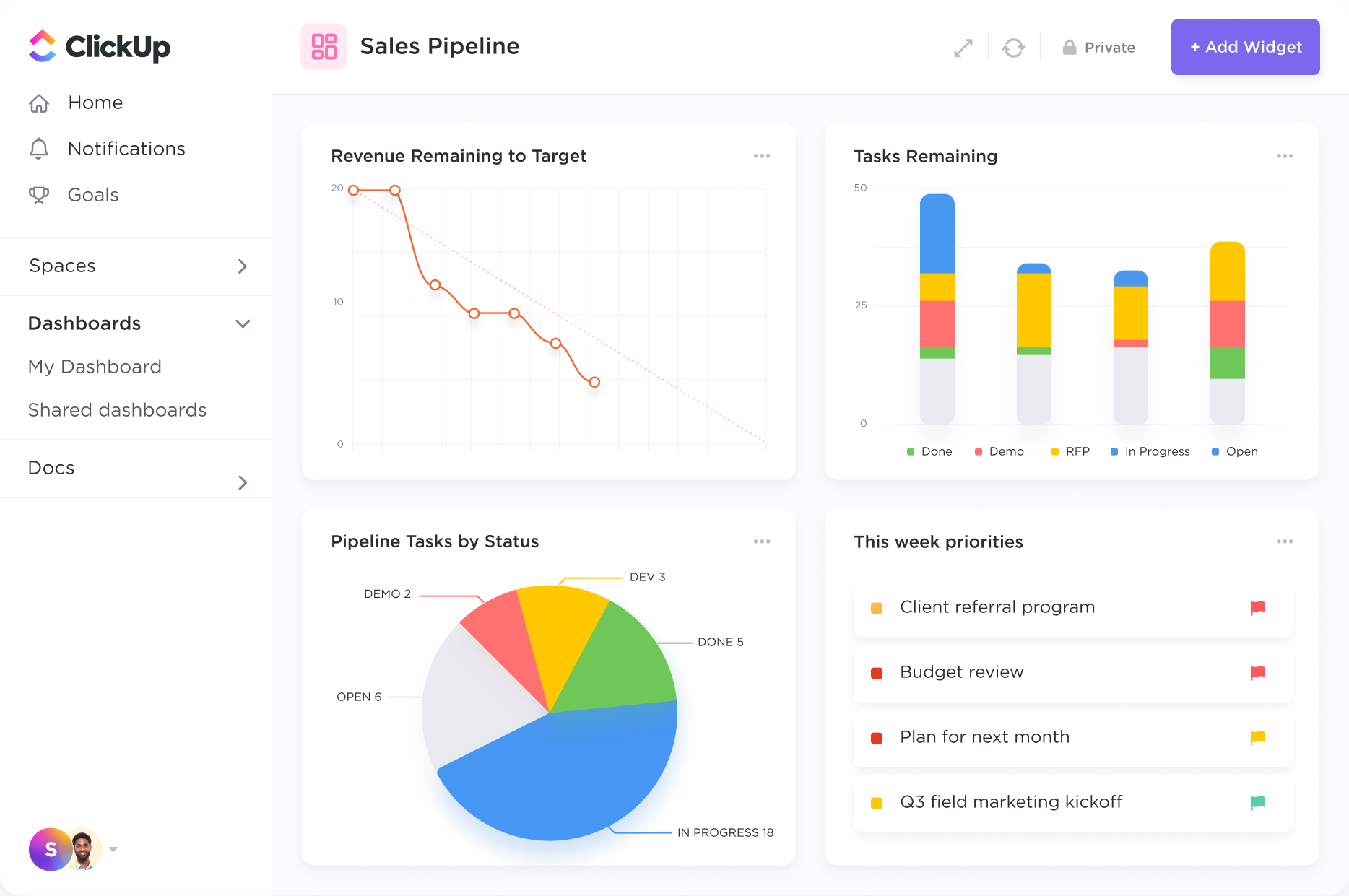Build the perfect customer database.
Create your ideal system to store and analyze contacts, customers, and deals. Add links between tasks, documents, and more to easily track all your related work.

Transform the way you manage customer relationships with ClickUp's customizable CRM software designed specifically for Range Managers. Streamline your workflow, track interactions effortlessly, and boost productivity with our user-friendly platform. Take control of your customer data and drive better results for your business with ClickUp.
Free forever.
No credit card.
Trusted by the world’s leading businesses
Create your ideal system to store and analyze contacts, customers, and deals. Add links between tasks, documents, and more to easily track all your related work.

Create high-level views to monitor customer lifetime value, average deal sizes, and more. ClickUp's 50+ Dashboard widgets make it easy to visualize all of your customer data in one place.

CRM software helps range managers streamline operations and improve efficiency by centralizing data, automating tasks like scheduling and inventory management, tracking customer interactions, and providing data-driven insights for informed decision-making and resource allocation.
Range managers should look for CRM software that offers features such as customer data management, sales tracking, contact management, lead scoring, reporting and analytics, email marketing automation, and integration capabilities with other business tools for a comprehensive range management solution.
CRM software can help range managers track and manage their inventory and equipment effectively by providing a centralized system to monitor stock levels, equipment maintenance schedules, and track usage history for better inventory management and maintenance planning.